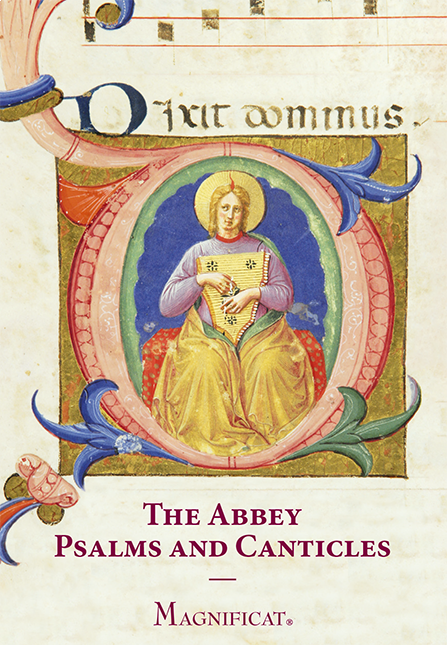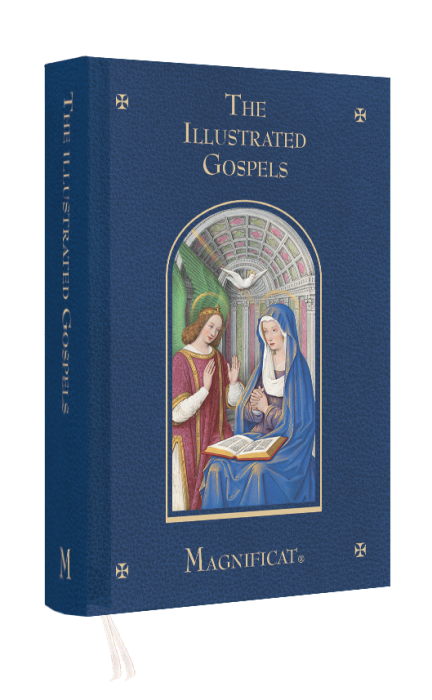Every spring, the green hills of England’s Lake District welcome thousands of new lambs. If you survey the region’s pastures, you can see specks of white accompanied by one or two smaller dots—a ewe surrounded by her offspring. When you’re up close, the sheer elation of the lambs impresses itself on you. They chase each other and leap about, responding to slight shifts in wind and sunlight. Their little tails twitch with delight at every new experience. In the presence of those lambs, you can’t help but be entranced by the fullness of their joy.
It is unsurprising, then, that when, in the pages of Scripture, we meet not just lambs but the Lamb himself, joy accompanies his presence: Let us rejoice and be glad and give him glory. For the wedding day of the Lamb has come (Rv 19:7). And as if being in his presence weren’t enough, we’re invited to something even greater: the supper of the Lamb.
Catholics are in fact invited to this supper even now, at every Mass: Behold the Lamb of God, behold him who takes away the sins of the world. Blessed are those called to the supper of the Lamb. It must be admitted, however, that receiving the Eucharist doesn’t always fill us with obvious joy. To the senses, it can seem a rather mundane act: We begin by standing in line—and few people get excited about lining up for food. But the supper of the Lamb calls us beyond the senses to a more lasting source of joy.
Let’s begin with the first word: supper. God again and again hints at a heavenly meal, a meal to end all meals. Remember Mount Sinai, where Moses and the elders saw God, and ate and drank (Ex 24:11). The prophets take up the theme: The Lord of hosts will provide for all peoples a feast of rich food and choice wines, juicy, rich food and pure, choice wines (Is 25:6). God tenderly begs us: Open wide your mouth that I may fill it (Ps 81:11).
It’s clear: All that hunger, all that need in our life—it’s not for nothing. Spiritual hunger is a divine gift, drawing us to the Lord. For now, we live halfway between the promise and its fulfillment. We’re in line for the wedding feast. Perhaps we’ve peaked inside the banquet hall—but then we returned, as always, to the mundane world of waiting in line. But recall that we’re in line not just for any feast, but for the supper of the Lamb. The lamb is a saving sacrifice. Its blood saves the Israelites in Egypt and flows in the temple in Jerusalem for centuries. In the vision of John, the Lamb that seemed to have been slain (Rv 5:6) is him who takes away the sins of the world. It’s clear: the Lamb isn’t just another lamb. He’s the once for all sacrifice (Heb 10:10), setting right what we could never set right on our own.
This supper, then, is the supper of the Lamb in two senses. It’s the Lamb’s supper in that he’s the main character of the story. But it’s also the supper of the Lamb in that his sacrificed flesh is the main course of the meal. Humanity was outside the banquet hall, waiting in the dark. While we waited, our God sent his Son through the doors of heaven to feed us with himself. And he still does.
Week after week, we wait in line, tasting the hidden Lamb, moving step by step towards the banquet, always wanting more. At times the wait seems interminable. But as we wait, his hidden presence feeds our soul, giving us a quiet, stable joy unthreatened by the darkest night. He comes to us, he says, that my joy may be in you and your joy may be complete (Jn 15:11).
(Father Philip Nolan, o.p., a Dominican priest of the Province of Saint Joseph, serves at Holy Innocents Parish in Pleasantville, New York.








